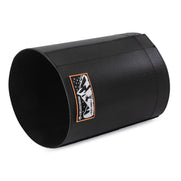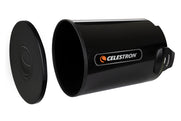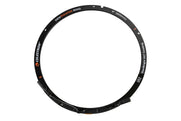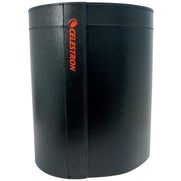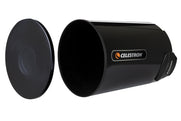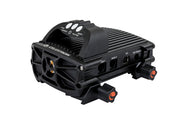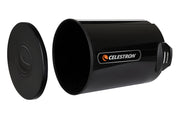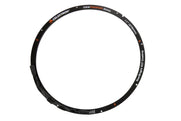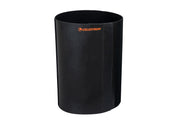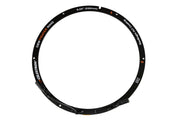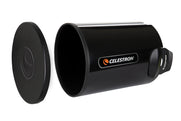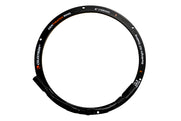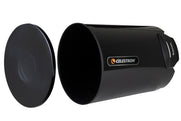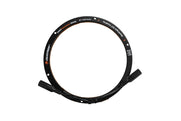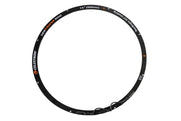The Ultimate Guide to Observing the Spring Sky (Northern Hemisphere)
March 22, 2021

While Winter is still trying to hang on with all its might, Spring is here and couldn’t have come soon enough. Spring in the Northern Hemisphere brings many changes, including warmer weather, longer days, and blooming flowers.
For stargazers, the new season also brings changes in the night sky. As the famous Winter constellations Auriga, Taurus, Orion, Canis Major, and Gemini progress westward, new Spring constellations take their place in the best part of the night sky.
If you’re new to astronomy and getting started with your telescope or binoculars, this guide will help familiarize you with the Springtime constellations. We’ll highlight some of the coolest observable celestial targets near or within these constellations, including galaxies, star clusters, and double stars. Springtime is known as “Galaxy Season” as galaxies are plentiful, especially those in the Virgo Cluster. However, because galaxies tend to be fainter objects, you’ll get the best views from dark skies.
Popular Springtime Constellations and Asterisms
In ancient times, our ancestors looked towards the heavens and noticed that with every season, new groupings of stars would appear in the sky. They tracked the predictable cycle of visible constellations that repeated every year. These ancient stargazers saw patterns in the stars resembling mythological characters, animals, and other objects.
We can observe the most popular Springtime constellations and asterisms from late March to late June. Although about fifteen springtime constellations are visible in the Northern Hemisphere, seven prominent constellations stand out and are most closely associated with Spring. These include Ursa Major, Boötes, Cancer, Leo, Coma Berenices, Virgo, and Hydra.
 |
Ursa Major The Greek astronomer Ptolemy cataloged Ursa Major, the Great Bear, in the 2nd century. It’s one of the sky’s best-known and most recognizable constellations. Native Americans also imagined the stars outlining a giant bear, while its three rear stars comprising a tail, three cubs, or even three hunters in pursuit of the bear. Ursa Major is also home to the Big Dipper asterism, formed by its seven brightest stars, which form a bowl and handle. In Spring, Ursa Major is high in the sky and favorably placed, like the old saying, “Spring up and Fall down.” |
 |
Boötes Boötes, the Herdsman, was first cataloged by the Greek astronomer Ptolemy in the 2nd century. It’s easy to find by following the curved handle of the Big Dipper asterism to the fourth brightest star in the night sky, the orange-colored Arcturus. Its torso appears like a diamond-shaped “kite.” Traditional depictions of Boötes show a herdsman holding two hunting dogs on a leash with a club in his other hand. In other illustrations, he holds a cane and sickle. Today, Boötes is known to have stars within its boundary containing many exoplanets. |
 |
Cancer Cancer, the celestial crab, is one of the thirteen zodiac constellations on the ecliptic plane. Because of this, a bright planet occasionally appears to move through the constellation. Bordering Cancer is the winter constellation Gemini to the west, Leo to the east, and Hydra to the south. Although it is faint, it is rich in star clusters. In Greek mythology, Cancer represents the crab that attacked Hercules in a duel with the water snake, Hydra. Cancer is a subtle constellation; its stars appear as an upside-down “Y.” |
 |
Leo Leo, the lion, is one of the best-known constellations of the zodiac. In Greek mythology, Leo is usually associated with the vicious and unstoppable Nemean lion. Leo was among the zodiac’s first constellations to resemble its namesake—a lion. Its head looks like a sickle, or a backward question mark, while the line of stars makes up the lion’s body. The blue-white first magnitude star, Regulus, marks the base of the sickle or the front paws of the lion. Use your imagination! Leo lies between the constellations Cancer in the west and Virgo in the east, making it easy to spot in the Spring sky. Nineteen stars within the constellation are known to host exoplanets. |
 |
Coma Berenices Coma Berenices, or Berenice’s Hair, is named after Queen Berenice II of Egypt. This constellation is found between Boötes in the east and Leo in the west and is home to the North Galactic Pole. To the naked eye from a dark sky site, Coma Berenices appears like a hazy patch of light in the sky. Many notable deep-space objects are inside, including several Messier galaxies and a globular cluster. Two stars within the constellation are known to have exoplanets. By manually pointing your telescope and panning around in this area, you will surely stumble across several deep-sky objects to explore. |
 |
Virgo Virgo, the Maiden of Spring, is one of the thirteen zodiac constellations and the second largest constellation in the Spring sky next to Hydra. Located where the ecliptic meets the celestial equator, Virgo lies between Leo and Libra. Artistic depictions render Virgo with angel wings, holding wheat in her right hand. She is also associated with the Greek goddess of justice, Dike, which is fitting because Virgo is adjacent to Libra, the constellation representing the scales of justice. Virgo begins as a ‘Y’ shape line of stars to a blue-white first magnitude star, Spica. A line of three stars extends out from Spica forming her torso, while another three lines of stars just to the north form her leg. Virgo is rich with known exoplanets and Messier objects. |
 |
Hydra Hydra, the Water Snake or Sea Serpent, is the largest constellation in the sky. Its head is south of Cancer, and its tail is near Libra. Hydra crosses the celestial equator with parts of its body in the northern and southern sky. Although Hydra is the largest constellation, it only has one bright star, Alphard. A cluster of five stars makes up its head. The rest of the stars are fainter and more difficult to view. |
 |
The Big Dipper Casual observers often mistake the Big Dipper for a constellation; however, it is an asterism. Its stars indeed resemble a bowl complete with a handle. The seven stars that make up the Big Dipper are part of the constellation Ursa Major, the Great Bear. The Big Dipper is circumpolar, which means it rotates around the North Star, Polaris, due to the Earth’s rotation. Although it lies in different parts of the northern sky throughout the year, Spring is when the Big Dipper is highest during the evening. It is closer to the north horizon during the evenings in the Fall and Winter. The Big Dipper is significant because its bowl, marked by the stars Dubhe and Merak, points to the pole star, Polaris, in the constellation Ursa Minor, also known as the Little Dipper or Little Bear. |
 |
Spring Triangle The Spring Triangle asterism is an outline formed by three bright stars from three prominent spring constellations: Regulus in Leo, Arcturus in Boötes, and Spica in Virgo. Use your imagination and connect the stars to see this narrow triangle of bright stars. No binoculars or telescopes are needed! |
Top Springtime Celestial Objects
Now that we have identified some of the best-known springtime constellations and asterisms, let’s look at a few popular Springtime celestial objects that you can see in a small to mid-aperture telescope (from about 60mm to 8” in aperture). Springtime is galaxy season, and there are several notable galaxies as well as open and globular star clusters and double stars to observe.
 |
Mizar The star in the middle of the Big Dipper’s handle is a naked-eye double star, Mizar and Alcor. You can see both stars with the naked eye from suburban skies if you have good eyesight. Mizar is a second-magnitude star, while Alcor is a fourth-magnitude star. Both are quite noticeable in a pair of binoculars. However, when viewed through a telescope, Mizar itself is also a double star, Mizar A and its fainter companion, Mizar B. Both stars are white. |
 
|
Bode’s Galaxy & Cigar Galaxy (Messier 81 and 82) Bode’s Galaxy and the Cigar Galaxy, M81 and M82, respectively, are two well-known galaxies neighboring each other in Ursa Major. You can observe them in the same field of view in most telescopes. M81 is a large spiral galaxy with two distinct spiral arms above and below its core. With an apparent magnitude of 6.94, it’s easy to see in a telescope or binoculars on moonless nights from suburban areas. Nearby, you’ll find the Cigar Galaxy, M82. It is an edge-on starburst galaxy with a unique cigar shape due to interactions with M81. With an apparent magnitude of 8.41, it is also a good target for binoculars and small telescopes from suburban areas on moonless nights. From a dark sky site, both galaxies can be observed in a pair of 15x70 binoculars and will appear as ghostly dim-light structures in small telescopes. One way to locate M81 and M82 is to draw an imaginary line from the stars Phecda (Gamma Ursae Majoris) to Dubhe in the bowl of the Big Dipper and extend the line at the same length beyond the bowl. |
 |
Globular Star Cluster (Messier 3) Charles Messier first observed the globular cluster Messier 3 in 1764 and added it to his famous catalog of deep-sky objects. M3 is a bright globular cluster located in the constellation Canes Venatici, the Hunting Dogs, near Boötes, the Herdsman. M3 is well placed in the sky in Spring and is one of the brightest and largest globular clusters in the night sky. With an apparent magnitude of 6.2 and containing approximately half a million stars, M3 is a popular target for backyard observers. It appears as a spotted fuzzy star in a good pair of binoculars. When observed through a 4-inch or larger telescope, parts of the cluster begin to resolve into individual stars. However, as with any deep-sky object, you’ll get the best views far from city lights. |
 |
Beehive Cluster (Messier 44) The Beehive Cluster, Praesepe or M44, is one of Spring’s most famous open star clusters. With an apparent magnitude of 3.7, it’s visible to the naked eye as a hazy patch of light from dark skies. This open cluster looks best in binoculars and small telescopes, making it an ideal target for backyard observers. Use low power to frame the cluster and gradually increase magnification to reveal a swarm of stars. Interestingly, in 2012, scientists discovered two exoplanets orbiting two separate stars–pr 0201 b and pr0211 b in the Beehive Cluster. These were the first exoplanets discovered orbiting Sun-like stars inside a star cluster. Although your telescope will not be able to reveal them, it’s fascinating to know they are there. |
 |
Algieba Also known as Gamma Leonis, Algieba is a fine double star located in the sickle of Leo. Astronomer William Herschel discovered it in 1782 after discovering the planet Uranus the prior year. Algieba comes from the Arabic Al Jabbah (The Lion’s Mane). Algieba comprises two orange-red and yellow stars of magnitudes 2.2 and 3.5. In steady-seeing conditions, you can resolve the stars in a small-aperture telescope with medium to high power. Algieba is a good target for backyard telescopes. |
 |
Leo Triplet (Messier 65, 66 and NGC 3628) This famous spring galaxy group, the Leo Triplet, consists of spiral galaxies M65, M66, and the Hamburger Galaxy NGC 3628. The triplet lies near the lion’s rear leg. With apparent magnitudes of 10.3, 8.9, and 10.2, all three galaxies may be seen in the same field of view–even in smaller aperture telescopes from a dark-sky site. But achieving this will be challenging. Of course, the larger a telescope’s aperture, the brighter the galaxies will appear. The Hamburger Galaxy lies only half a degree to the north of galaxies M65 and M66. Their galactic disks are tilted at different angles, giving each a unique look. The Hamburger Galaxy appears edge-on, while M65 and M66 are slightly tilted to reveal their spiral arms. |
 |
Black Eye Galaxy (Messier 64) The Black Eye Galaxy, also known as Messier 64, is located in the constellation Coma Berenices and is sometimes called the Evil Eye Galaxy. English astronomer Edward Pigott discovered it in March 1779. M64 has a spectacular dark band of dust on its disk, giving it an irregular shape with uneven brightness and texture. This dark band resembles a “black eye.” With an apparent magnitude of 9.36, M64 is a favorite target for backyard stargazers. You can make out its bright core in small aperture telescopes in areas with less light pollution. |
 |
Galaxy (Messier 49) Messier 49 is an elliptical galaxy associated with the Virgo Galaxy Cluster and is a popular observing target because it is the brightest galaxy in the Virgo Cluster. M49 has an apparent magnitude of 9.4 and is viewable in binoculars as a fuzzy patch of light in dark skies. Most backyard telescopes will easily reveal the galaxy’s core, but don’t expect to see any resolved stars–even in large aperture telescopes. Astronomers believe M49 could be five times as large as our Milky Way Galaxy. |
 |
Sombrero Galaxy (Messier 104) Messier 104, also known as the famous Sombrero Galaxy, is a magnificent edge-on spiral galaxy in the constellation Virgo. It has a bright nucleus and an unusually large central bulge with a prominent dark dust lane, making it look like a Mexican hat. The Sombrero Galaxy is located near the southern boundary of Virgo and has an apparent magnitude of 8.98. The galaxy is visible in a good pair of binoculars and backyard telescopes away from light pollution. However, a telescope with at least 8” in aperture will be required to distinguish the bulge from the disk. |
Helpful Observing Hints
|
Tip #1: Use an Astronomy App or Star Chart
|
Using a detailed star map is an excellent way to learn to locate these celestial wonders or any other objects at any time of the year. It may be an old-fashioned learning tool, but it just works. Today, astronomy apps such as Celestron’s SkyPortal Powered by SkySafari™ mobile app (included with any Celestron telescope purchase) can provide even more detailed information. SkyPortal offers audio and written descriptions of various objects, celestial coordinates, a real-time sky map, rise |
|
Tip #2: Seeing Conditions
|
Steady seeing conditions are critical while observing objects such as planets, the Moon, or double stars. However, poor seeing conditions less affect deep-sky objects such as nebulae and galaxies. Avoid nights of bad seeing when the turbulent atmosphere and targets appear like shimmering blobs in the telescope’s eyepiece. Start with low magnification and work up to higher magnification if the views remain steady. You will be amazed how sharp and detailed objects can appear during a night of good seeing. |
|
Tip #3: Telescope Cooldown
|
Cool your telescope down! Ensure you bring your telescope outside about an hour before observing to cool it to ambient temperature. The telescope must reach thermal equilibrium with the outside air temperature to avoid distorted views. Telescopes with large mirrors and lenses may take longer to cool down for the best views. |
|
Tip #4: Collimation
|
Collimate, collimate, collimate! If you own a Newtonian or Schmidt-Cassegrain telescope, ensure your telescope’s optics are collimated. It can make a difference when it comes to discerning fine detail. If the optics are slightly out of alignment, you will cheat yourself out of seeing the clearest and sharpest details. Make it a habit to check collimation and adjust once your telescope is cooled down. Most refractor telescopes generally do not need to be collimated. |
|
Tip #5: Dress in layers
|
Springtime offers us amazing views of intergalactic space with an abundance of cosmic jewels, and the warmer temperatures should help us get outside to use our binoculars or telescopes. Just dress warmly and in layers, as temperatures may change as the night goes on. If you have a beanie and scarf, wear them to keep your head, ears, and neck warm. Gloves are helpful but can make things difficult, such as holding on or changing eyepieces. Wear double socks and insulated boots to keep your feet warm, and if you have hand and foot warmers, they can make a world of difference in keeping warm. |
If you own a Schmidt-Cassegrain or EdgeHD telescope, make sure you use a dew shield to help protect your telescope’s front corrector plate and help prolong the effects of dew. Click below to browse our Dew Prevention products.
You can learn about the night skies of the Northern Hemisphere with Celestron Sky Maps! This classic collection of seasonal star charts, with a glow-in-the-dark luminous star finder, has been around for years. It is popular with beginning stargazers and seasoned amateur astronomers because it provides everything you need to find constellations quickly.
Final Thoughts
Springtime offers you and your family an excellent opportunity to view many new celestial targets as they come into view. As temperatures warm, it’s easier to venture outside to discover what the night sky offers. Telescope and binocular observation are a great way to enrich your natural curiosity about our magnificent Universe. Sharing the view with others, especially family and friends, makes the hobby more fun!
Don’t forget to explore the Moon, which is visible every month, and any brighter planets when they are visible. If you can observe from darker skies, by all means, do it! You will be amazed at what a small aperture backyard telescope can reveal when conditions are just right.
Clear skies and happy observing!
Other articles you might be interested in: Ultimate Guide to Observing the Universe
































